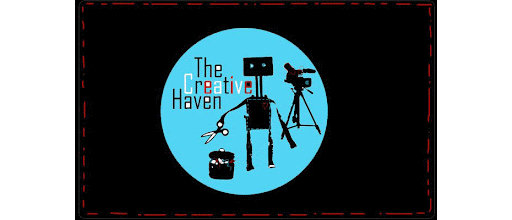 |
| (Image of Dell working at Harvest Workroom on her current residency) Image Source: Harvest Workroom |
It's been a while since we have done an interview here and I am very excited that our latest interview is with Dell Stewart as I have been a fan of her artwork and blog for a while. As mentioned in my previous post Dell is teaching a 4 day stop-motion workshop at Harvest Textiles from the 2nd - 5th April for teens. In addition to the workshop Dell is currently participating in a residency at Harvest Workroom working on experiments with printing which will be used in a handmade book and animation. You will be able to view the animation at the Harvest Workroom window (510- 512 Lygon Street, East Brunswick) as it progresses over the residency.
Dell amazes me with her ability to work so well across many artistic disciplines and also her genuine passion and support for other people's art, craft, design and animation (which you can see through her blog) is inspiring.
So here we go - a little conversation with Dell about her stop-motion work
Dell amazes me with her ability to work so well across many artistic disciplines and also her genuine passion and support for other people's art, craft, design and animation (which you can see through her blog) is inspiring.
So here we go - a little conversation with Dell about her stop-motion work
1. Tell us a little about your arts/design background
I have been making things as long as I can remember. I studied Fine Art – Printmaking and Drawing – in Queensland. I then moved to Melbourne and later studied Animation and Interactive media at R.M.I.T. I have been exhibiting regularly since art school, everything from drawing, installation and photography to animation, clothing and textiles.
2. When did you first discover stop-motion animation?
I guess I sort of fell into animation. I remember discovering after effects on a friends computer and playing around with it, I was excited enough to think I could do some animation for my first exhibition in Melbourne at First Floor artist's and writer's space. This seems crazy to me now, and I get a rash just considering most editing and post production software now. Some rotoscoped drawn animation I did for an exhibition at Utopian Slumps in 2007, Dead to the World.
I later discovered stop motion at R.M.I.T. but at the time I was definitely more interested in drawing, both on paper and in the computer. Annemarie Szeleczky was doing her Masters at A.I.M. at the time, working with found objects on glass in layers under the camera, I do remember loving her multi-layered collages to music. Just through seeing so much animation during my time at A.I.M. and watching other students working on various projects opened up the possibilities for me.
3. Do you have any particular favourite stop-motion works or other artists that inspire you?
Andrew Thomas Huang. Amazing!
Allison Schulnik's Forest. and Mound.
Also Maricor/Maricar, PES short and sweet, Isobel Knowles and Van Sowerwine and my beloved husband Adam Cruickshank!
Early on it'd have to be Terry Gilliam, maybe the first stop motion I ever saw?
4. What mediums do you like to work with to create your sets and characters?
Stop motion appeals to me for it's rich tactility. With better quality cameras and the ease of shooting on digital you can really capture the qualities of whatever you are working with. I'm inclined to work with paper cut-outs as I still love to paint and draw, and I love working with textiles – also other found bits and pieces – anything is possible! Fruit Salad.
I worked with Kate Matthews on an Artist's in Schools project at Wooranna Park Primary where they had a multi layered animation box for the purpose of animating easily with children. It was a fun project and we were delighted by the results, animating with paper cut-outs, rice and spices, photos and collage elements.
International Noses from Kate Matthews on Vimeo.
Smells and Memory from Kate Matthews on Vimeo.
Kate and I have since run school holiday animation workshops at Artplay working with paper cut-outs and we would love to do more.
5. What has been your favourite stop-motion piece that you have worked on?
I didn't do any stop motion in this project (I was drawing) but 'It's Like That' by the Southern Ladies Animation Group. The puppets were incredible knitted birds, beautifully animated by Sharon Parker, Justine Wallace, Sophie Raymond, and Diana Ward.
Its Like That from Diana Ward on Vimeo.
6. Can you talk a little on the processes used and experience of making this stop-motion animation?
It was a collaborative process, an idea brought to the group by Nicole Mackinnon, that basically everyone felt needed to be told. 'It’s Like That' uses the voices of 3 refugee children held in mandatory detention under the Migration Act 1958. They were interviewed over the phone by ABC journalist Jacqueline Arias. Once the soundtrack was edited it was broken up into sections for each animator to work on, with the stop motion characters narrating and holding the story together. This story is sadly still as relevant today as it was in 2003. Watch it! I drew the firey rice.
And read about it:
7. What are your future plans in animation? Do you have anything in the pipeline that you would like to talk about?
I'm currently doing a residency at Harvest Workroom and I hope to do some more stop-motion workshops later this year, at both Craft Victoria and Harvest textiles. My own projects might be limited to some experiments to go along with music and a few elements for my exhibition at West Space later in the year.


